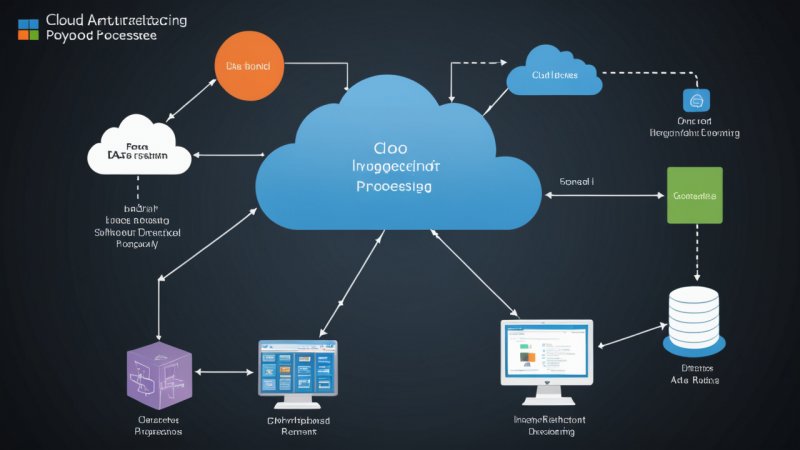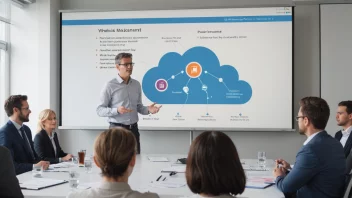Introduction
In today’s fast-paced digital environment, processing data in real-time is crucial for businesses to stay competitive. This article will guide you through the steps of implementing real-time data processing using cloud solutions. You will learn about the essential components, the architecture involved, and practical examples to set up your own system.
Step 1: Understand the Basics of Real-Time Data Processing
Before diving into implementation, it’s essential to grasp the fundamentals of real-time data processing. This refers to the ability to process data instantly as it comes in, allowing businesses to make timely decisions based on the most current information.
Key Concepts:
- Latency: The time taken to process data.
- Throughput: The amount of data processed in a given time period.
- Stream Processing: Processing data in streams rather than in batches.
Step 2: Choose a Cloud Provider
Various cloud providers offer tools and services tailored for real-time data processing. Some popular options include:
- Amazon Web Services (AWS): Offers services like AWS Lambda and Kinesis.
- Google Cloud Platform (GCP): Features Cloud Pub/Sub and Dataflow.
- Microsoft Azure: Provides Azure Stream Analytics.
Evaluate each provider based on your specific use case, budget, and scalability needs.
Step 3: Design Your Architecture
Designing an efficient architecture is crucial for the performance of your real-time system. A typical architecture includes:
- Data Ingestion: Use services like AWS Kinesis or Google Pub/Sub to ingest data from various sources.
- Stream Processing: Implement stream processing frameworks such as Apache Kafka or Apache Flink to process incoming data in real-time.
- Data Storage: Choose a low-latency database like Amazon DynamoDB or Google Bigtable for storing processed data.
- Data Visualization: Utilize tools like Tableau or Google Data Studio to visualize the processed data.
Step 4: Implement Data Ingestion
Once you have your architecture designed, it's time to implement the data ingestion layer. Depending on your chosen cloud provider, you can set this up as follows:
// Example for AWS Kinesis
const AWS = require('aws-sdk');
const kinesis = new AWS.Kinesis();
const params = {
StreamName: 'your-stream-name',
Data: JSON.stringify(yourData),
PartitionKey: 'partition-key'
};
kinesis.putRecord(params, function(err, data) {
if (err) console.log(err);
else console.log('Success', data);
});
Step 5: Set Up Stream Processing
Next, configure your stream processing framework. Here’s a simple example using Apache Kafka:
// Kafka consumer example
const { Kafka } = require('kafkajs');
const kafka = new Kafka({
clientId: 'my-app',
brokers: ['kafka-broker:9092']
});
const consumer = kafka.consumer({ groupId: 'test-group' });
const run = async () => {
await consumer.connect();
await consumer.subscribe({ topic: 'your-topic', fromBeginning: true });
await consumer.run({
eachMessage: async ({ topic, partition, message }) => {
console.log(`Received message: ${message.value}`);
},
});
};
run().catch(console.error);
Step 6: Store and Visualize Processed Data
After processing the data, you’ll want to store it efficiently for quick retrieval. Utilize a database that supports low-latency access:
- DynamoDB: Great for storing key-value pairs.
- Google Bigtable: Ideal for large datasets.
For visualization, connect your storage solution to a BI tool of your choice, and create dashboards to monitor real-time data analytics.
Step 7: Monitor and Optimize
Lastly, regularly monitor your system’s performance metrics, including latency and throughput. Use cloud monitoring tools provided by your chosen cloud platform to identify bottlenecks and optimize your setup for better performance.
Conclusion
Implementing real-time data processing in cloud solutions involves understanding the core concepts, selecting the right cloud provider, designing an efficient architecture, and systematically setting up each component. By following these steps, you can effectively harness the power of real-time data to drive your business decisions.
Final Advice: Stay updated with the latest trends in cloud technologies and continuously evaluate your system for improvements.






